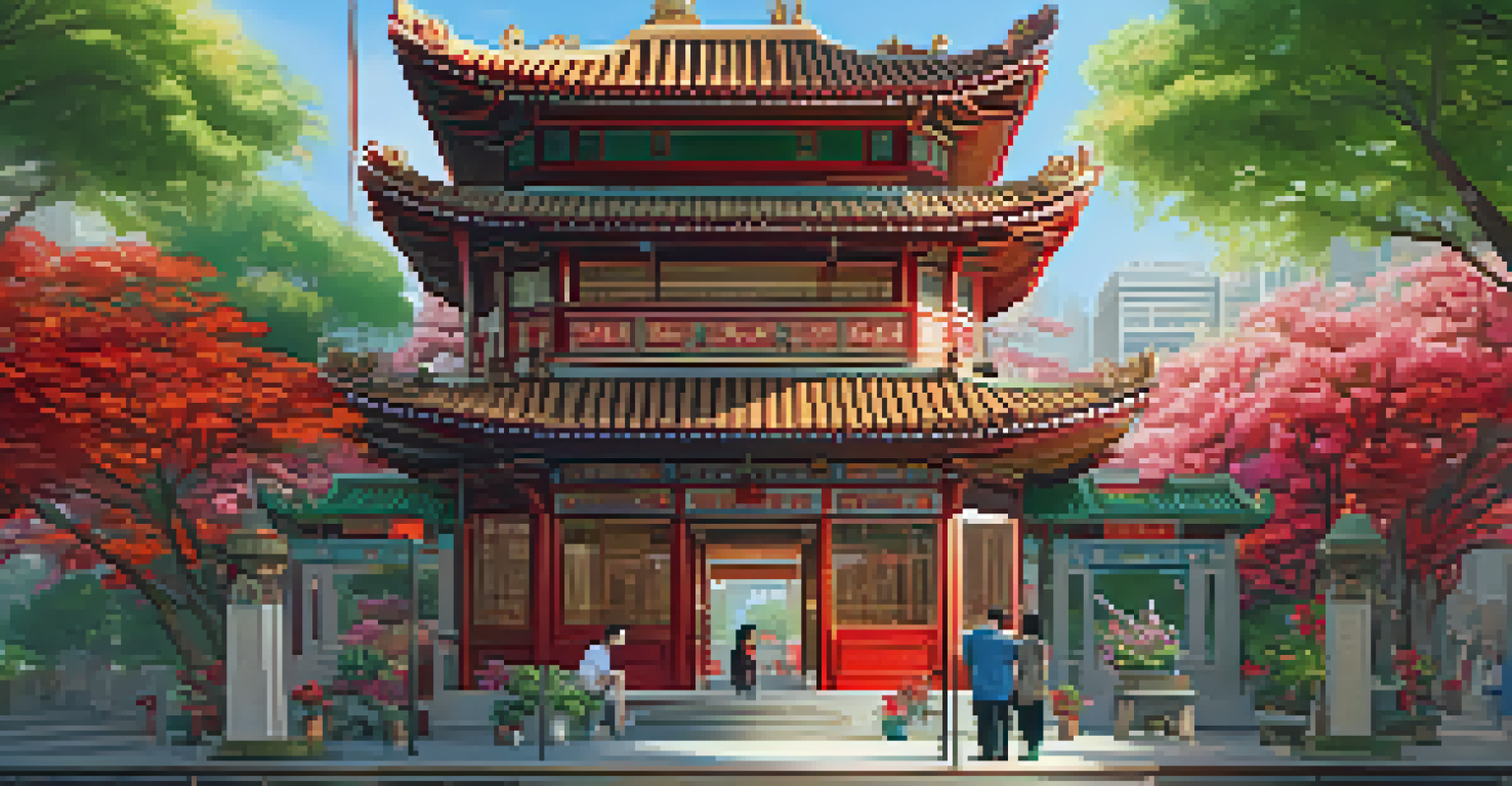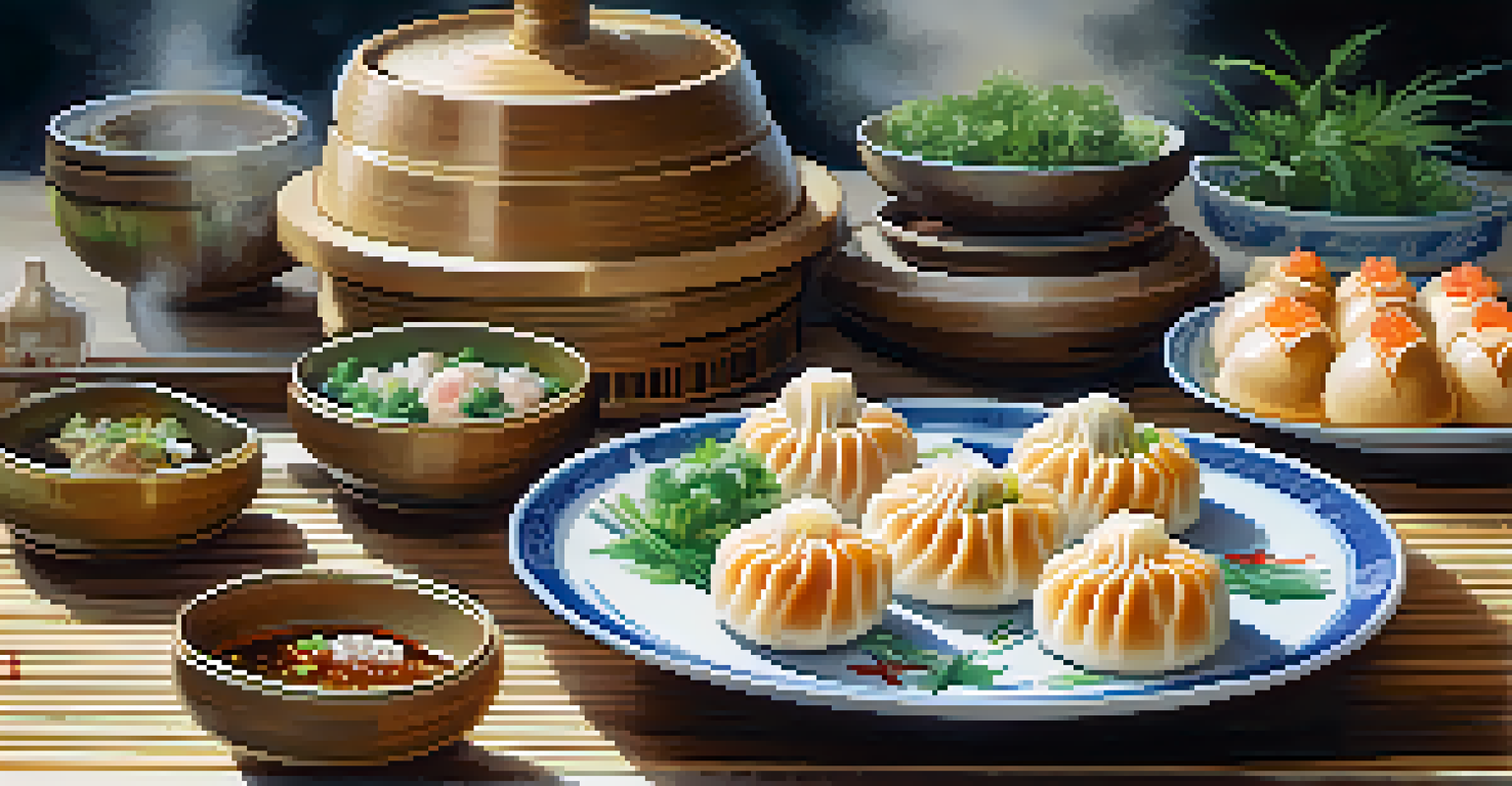The Historic Essence of Chinatown: A Cultural Journey

The Origins of Chinatown: A Glimpse into History
Chinatown's roots can be traced back to the mid-19th century when Chinese immigrants arrived in search of better opportunities. They settled in urban areas, creating tight-knit communities that preserved their culture amidst foreign surroundings. This migration was largely fueled by events such as the California Gold Rush and the Taiping Rebellion in China.
Culture is the widening of the mind and of the spirit.
As these immigrants established their new lives, they brought along their traditions, languages, and culinary practices, laying the groundwork for what would become vibrant neighborhoods. Over the years, these communities faced adversity, including discrimination and exclusion laws, which only reinforced their resolve to maintain their cultural identity.
Today, Chinatown stands as a testament to resilience and adaptation, showcasing a blend of traditional and contemporary elements that reflect the evolving narrative of its people. Visitors are often captivated by the colorful storefronts and the aroma of authentic cuisine, which tell stories of generations past.
Cultural Significance: More Than Just a Tourist Spot
Chinatown is not just a destination; it's a living museum of cultural heritage. The vibrant streets are adorned with symbols of Chinese culture, such as lanterns, dragons, and intricate calligraphy, each carrying deep meanings and stories. These elements serve as reminders of the community's history and traditions.

Festivals like the Lunar New Year and the Moon Festival bring the streets alive with parades, music, and dance, inviting both locals and tourists to participate. Such events offer a glimpse into the rich cultural tapestry that defines Chinatown, fostering understanding and appreciation among diverse communities.
Chinatown's Rich Cultural Heritage
Chinatown serves as a vibrant living museum that preserves and celebrates the Chinese culture through its traditions, festivals, and cuisine.
Moreover, the shops and restaurants lining the streets serve as cultural ambassadors, offering authentic experiences that go beyond mere consumption. Through food and art, visitors can engage with the history and customs that shape the lives of those within the community.
The Role of Cuisine in Chinatown's Identity
One cannot discuss Chinatown without mentioning its food, which is a central pillar of its cultural identity. From dim sum to Peking duck, the culinary offerings reflect the rich tapestry of regional Chinese cuisines. Each dish tells a story, representing the diverse backgrounds of the community's residents.
Food is our common ground, a universal experience.
Food not only nourishes but also serves as a medium for cultural exchange. Many non-Chinese visitors experience authentic dishes for the first time in Chinatown, fostering curiosity and appreciation for the culture. The bustling markets and eateries provide a sensory experience that is both satisfying and enlightening.
Additionally, the rise of fusion cuisine showcases the adaptability of traditional dishes to contemporary palates, further embedding Chinatown into the broader culinary landscape. This evolution underscores the importance of food as a dynamic component of cultural heritage.
Architectural Highlights: A Walk Through Time
The architecture of Chinatown is a visual narrative of its history, with buildings that reflect both traditional Chinese designs and Western influences. Iconic structures, such as pagoda-style roofs and ornate facades, are interspersed with more modern developments, creating a picturesque urban landscape.
Walking through Chinatown feels like stepping into a different world, where every corner has a story to tell. The juxtaposition of old and new highlights the community's ongoing journey, balancing the preservation of heritage with the necessity of progress.
Cuisine as Cultural Connection
The diverse culinary offerings in Chinatown not only nourish but also foster cultural exchange, allowing visitors to engage with authentic experiences.
Architectural tours often reveal hidden gems, such as temples and cultural centers that serve as gathering places for the community. These sites are not only visually striking but also play a vital role in maintaining the cultural fabric of Chinatown.
Art and Expression: The Heartbeat of Chinatown
Art in Chinatown is a vibrant expression of the community's identity, with murals, sculptures, and performances that celebrate its heritage. Local artists often draw inspiration from their cultural roots, creating works that resonate with both residents and visitors alike.
Cultural festivals frequently showcase traditional art forms such as calligraphy, painting, and dance, providing a platform for artists to share their craft. This not only enriches the community but also invites dialogue about the significance of art in preserving cultural narratives.
Moreover, contemporary art initiatives are emerging, bridging the gap between traditional practices and modern interpretations. This fusion reflects the dynamic nature of Chinatown, where the past and present coexist harmoniously.
Challenges Faced by Chinatown: Resilience in Adversity
Like many historic neighborhoods, Chinatown has faced significant challenges over the years, including gentrification, economic downturns, and social issues. These factors threaten the very essence of the community, pushing out long-standing residents and businesses.
However, the resilience of Chinatown's inhabitants shines through these difficulties. Community organizations and activists work tirelessly to advocate for the preservation of their cultural spaces and to support local businesses, ensuring that the neighborhood remains vibrant and welcoming.
Resilience Amidst Challenges
Despite facing challenges like gentrification and economic downturns, the community's resilience shines through as they advocate for cultural preservation and support local businesses.
Moreover, the recent global pandemic has further highlighted the importance of solidarity and support within the community. Initiatives to promote local dining and shopping have gained momentum, demonstrating a collective commitment to safeguard Chinatown's future.
The Future of Chinatown: A Cultural Legacy
As we look to the future, Chinatown continues to evolve while holding onto its rich heritage. The interplay between tradition and modernity creates a unique environment where new generations can explore their cultural roots while embracing contemporary influences.
Efforts to engage younger audiences and promote cultural education are vital for the survival of Chinatown's legacy. Programs that encourage community involvement and cultural exchange will play a crucial role in passing down traditions and fostering pride in the heritage.

Ultimately, Chinatown stands as a powerful reminder of the importance of cultural diversity in our society. Its future depends on the collective efforts of the community and its allies, ensuring that this historic neighborhood remains a vibrant cultural hub for generations to come.